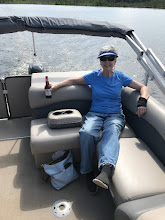
We seem to be awakened half the night by the railroad crossing, where the mighty beast flashes by at 60 mph and any late night wayward traffic must come to a stop. We’re boondocking just down the road apiece from I-8 and Sidewinder Road on Wednesday night, the first night out with our new to us camper, on our way to explore Anza-Borrego State Park in southern California.
Anza-Borrego is huge (600,000+ acres); California’s largest state park and the only one to allow dispersed free camping. Those words being music to our ears, we head out on Thanksgiving morning as we normally do, not knowing where we’ll end up to spend the night. We’ve left without detailed maps of the area we plan to visit but I tell Marc I’m pretty sure we take the exit at Ocotillo, whose brown sign merely states “desert parks” and head north on Imperial Highway, a misnomer if I’ve ever seen one, as we traverse the narrow, shoulder-less, hilly road. We go through a border patrol checkpoint and then pull-over at a kiosk which features an area map—our only signal that we have entered the actual park; quite obviously via the back door.
After a brief pullover to take long distance photos of the Carrizo Badlands, with the wind blowing sand against our bare legs, we decide to head on and look for a more sheltered spot to settle into for the day and evening. Carrizo looks interesting but is definitely four wheel drive country.

Overland Stage Route
We find what we are looking for with a dirt track labeled Overland Stage Road 1849 which heads east and looks passable with the Freightliner. We stop some travelers coming back out the road and ask its condition and if there may be a place to camp and they helpfully point out that there is a spot by the trees and that the road is OK. Soon enough after a mere mile, we are able to pull off the road into a wide spot nestled in the scrub and Palo Verde trees. We set up camp; take a short sojourn up the dirt road and across the hills to find some monuments made out of rock (denoting the stage stop?), take in the views and then head back to prepare our Thanksgiving ham.




While in camp, Marc also worked on some dead Palo Verde walking sticks for both of us, which are a beautiful golden color.


Blair Valley
We head out bright and early the next morning continuing our meandering north on S2 which lends great morning light to the Blair Valley region of Borrego. There are signs of settlements here and there and we briefly exit the park then reenter upon intersecting Hwy. 78, a main artery from San Diego to the OHV Park at Salton Sea. Traffic picks up considerably (trucks and toy haulers) until we mercifully decide to exit back onto a smaller road which immediately starts up a twisty grade on its way to Borrego Springs, a town of about 3000 and the official Visitor’s Center and Museum. The Blair Valley side of Borrego is much lusher, higher in elevation and obviously gains more precipitation. Within view are farther western mountaintops sporting trees. Also populating this area are mile after hilly mile of closely packed Cholla cactus—those dreaded jumping demons that pose a threat to human and animal alike. This would be a tedious area to try camping with pets.

Box Canyon
Upon nearly reaching the summit we pull over at a historical sign for Box Canyon. There amidst the interesting flora is a winding pathway to the edge of a very small canyon with explanation that this was not only also part of the 1849 stage road, but it was originally hewn by the first emigrants to California, in 1847. The emigrants made the goat trail which sits just above the canyon bottom, which was used by the stagecoach.




Visitor Center
The state of California spent nearly $7 million dollars building the underground visitor center and gardens for Anza Borrego and it is a welcoming place which even let us take on water for our rig. While there, we finally were able to purchase good maps indicating mileage and highlights on all the back dirt roads for future trips. They maintain a pond and oasis for habitat for the highly endangered pupfish, a prehistoric fish native only to Death Valley.



Arroyo Salado
To wind up our day with a campsite, we heed words of advice and head on S22 towards the eastern boundary of the park where we find the very primitive Arroyo Salado campground. Marc again finds a spot we can back into and we’re glad we arrived early as it soon fills with tenters and ATVers. We are the only trailer in camp—the only one to venture down the rough road which would likely high center most normal trailers. We look out and down upon the Borrego Badlands—a more extensive area than the others we glimpsed the day before. There are trails into these as well, also accessed only via four wheel drive sand tracks. I’ll miss seeing them this trip as well.
To Be Continued....




